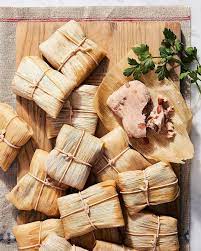
Traditional Cherokee bean bread is boiled and typically served with soups and stews.
**Preparation Time:** 45 minutes
**Cooking Time:** 45 minutes
**Total Time:** 4 hours
**Yield:** 15 breads
### Ingredients
– 1 cup dried beans (such as pinto or black)
– 8 cups water
– 4 1/4 cups white corn flour
– 2 teaspoons table salt
– 20-25 dried corn husks, soaked in hot water
### Instructions
**To Cook the Beans:**
1. Boil beans in water in a saucepan for about 2 hours until tender, adding water as needed.
**To Make the Bean Bread:**
1. Mix corn flour and salt in a bowl.
2. Strain cooked beans, then add to the flour mixture.
3. Pour in 2 1/2 cups of reserved hot bean broth, mixing to form a sticky dough.
4. Boil a pot of water.
5. Shape dough into 3-inch oval patties and wrap each in corn husks, securing with strips.
6. Place wrapped breads in boiling water, reduce to a simmer, and cook for 45 minutes.
7. Check for doneness by removing one; if the husk peels away easily, it’s done.
**Storage Information:**
Store wrapped breads in an airtight container in the fridge for up to a week or freeze for longer storage.